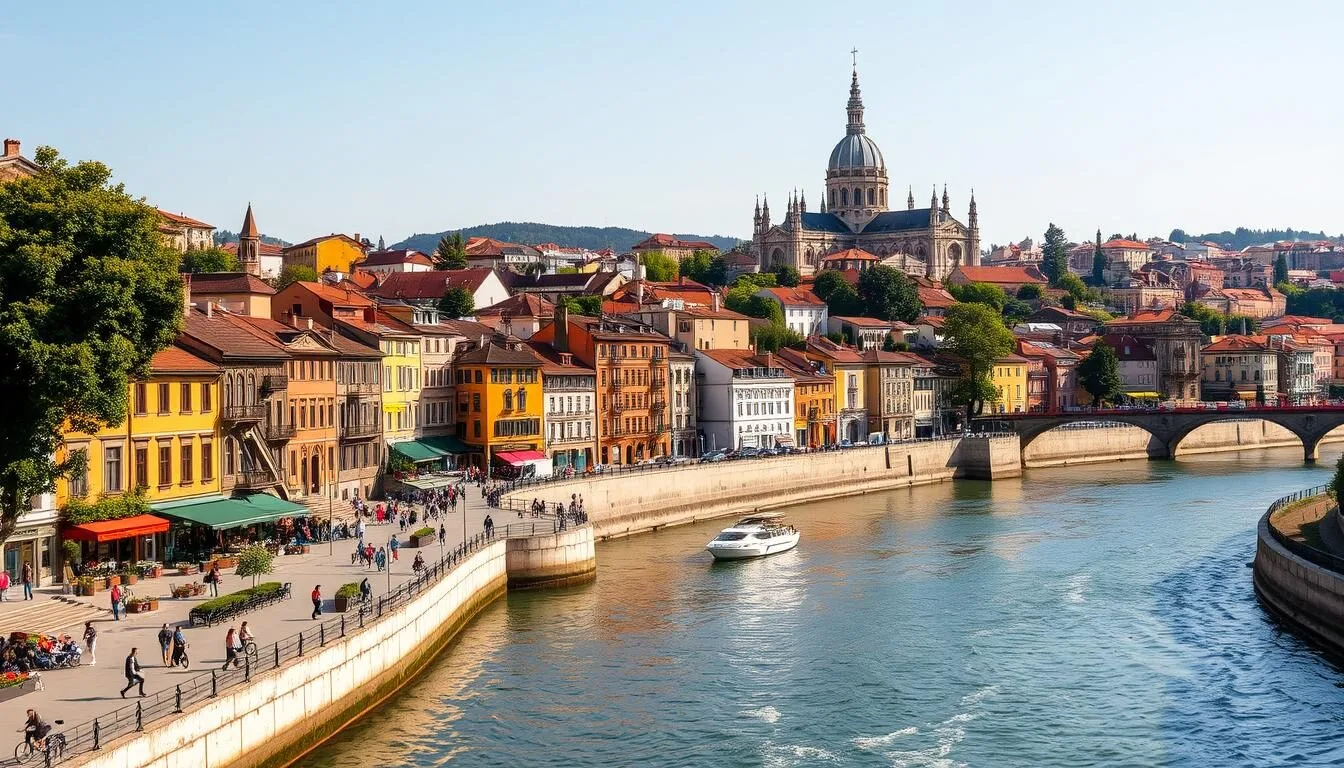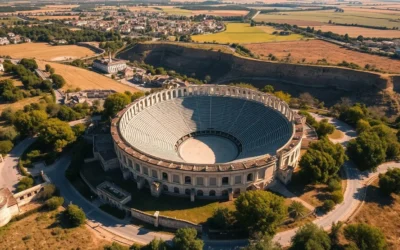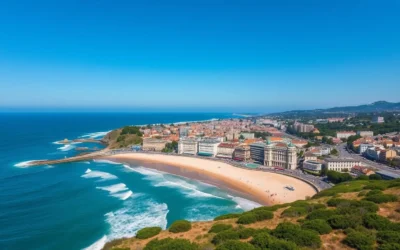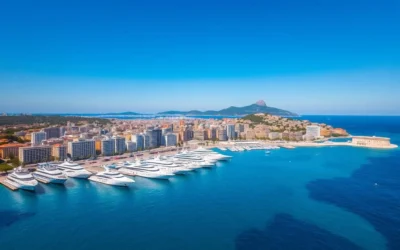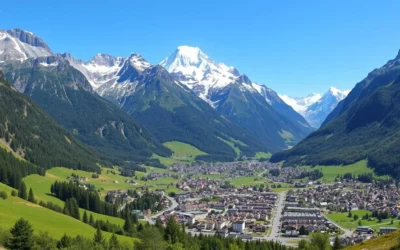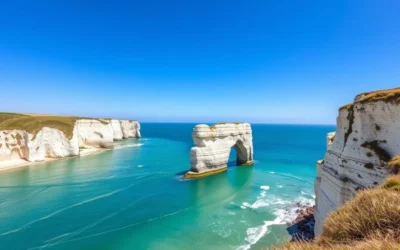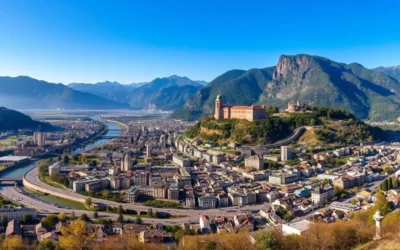✓ Accommodations✓ Flights✓ Rental Cars✓ Tours & Activities
Imagine strolling through a city where history and culture blend seamlessly with modern charm. You are in Lyon, a place that has been a hub of activity since 43 BCE, when it was founded as Lugdunum under the Roman Empire.
As you wander through its cobbled streets, you’ll discover breathtaking architecture, traditional bouchons, and world-class restaurants that make Lyon the gastronomic capital of France. Your culinary experience will be enriched by the local cuisine, a perfect blend of traditional and modern flavors.
During your trip, you’ll explore distinct districts, each with its own unique character, from the Renaissance architecture of Vieux Lyon to the historic silk-working district of La Croix-Rousse. With its rich history and vibrant cultural scene, Lyon is a must-visit destination.
Discovering Lyon: France’s Gastronomic Capital
As you step into Lyon, you’re immediately immersed in a world where culinary excellence is not just a trait, but a way of life. This city, renowned for its contribution to French cuisine, offers a rich gastronomic experience that is deeply rooted in its history and cultural heritage.
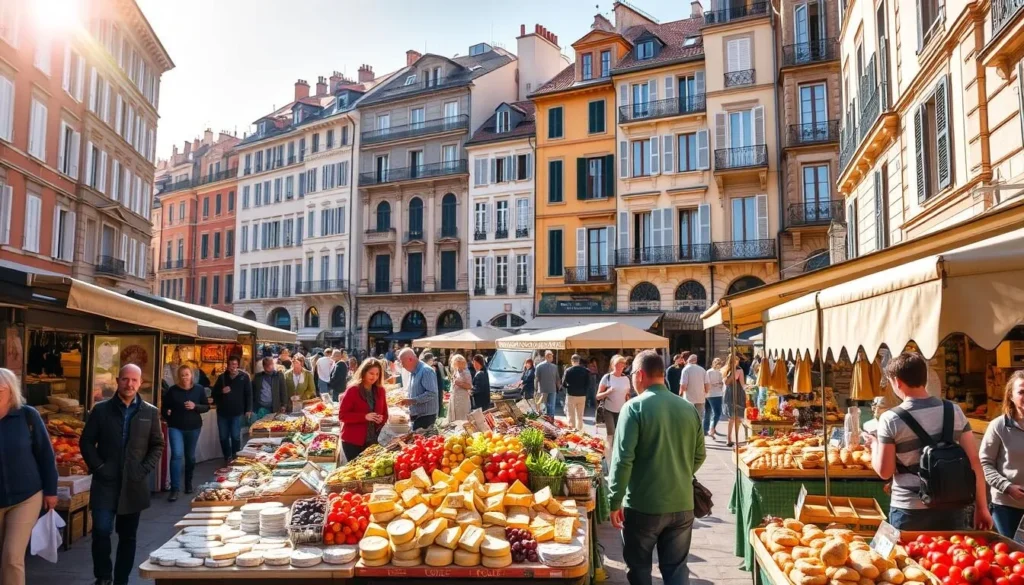
A Brief History of Lyon
Lyon’s story spans over 2,000 years, evolving from the Roman city of Lugdunum to a major industrial center, and now, a UNESCO World Heritage site. The city‘s strategic location at the confluence of two major rivers made it an important trading hub throughout European history. This blend of historical significance and modern innovation makes Lyon an essential destination for travelers interested in authentic French culture.
- Lyon earned its reputation as France’s gastronomic capital through centuries of culinary tradition.
- The city’s unique geographical position has influenced both its cuisine and cultural identity.
Why Lyon Should Be on Your Travel Bucket List
Lyon is a must-visit destination for any food enthusiast. Dubbed “the stomach of France,” Lyon is often the training ground for young chefs to learn their trade. The traditional bouchons of Lyon offer a dining experience that connects you to the city‘s working-class history and culinary heritage. Whether you’re savoring local specialties or exploring the markets, Lyon promises to be a highlight of your travel time in France.
- The city offers a perfect blend of historical significance and modern innovation.
- Lyon’s culinary excellence is a reflection of the rich cultural tapestry of the country.
In Lyon, you’re not just visiting a city; you’re experiencing a way of life that is deeply intertwined with food, culture, and history. It’s a place where every meal is a celebration, and every visit is a journey through the flavors and traditions of France.
Explore Vieux Lyon: The Renaissance Quarter
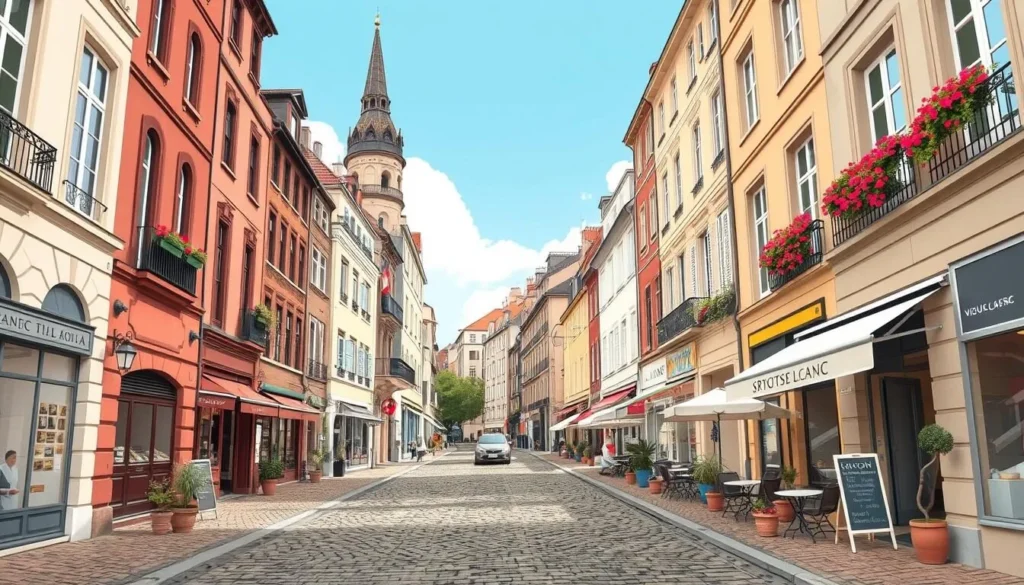
Discover the charm of Vieux Lyon, where Renaissance heritage and modern allure blend seamlessly. This historic district is a treasure trove of architectural gems, cobblestone streets, and cultural experiences waiting to be uncovered.
Renaissance Architecture and UNESCO Heritage
Vieux Lyon stands as one of Europe’s most extensive Renaissance neighborhoods, earning UNESCO World Heritage status for its exceptional architectural preservation. As you wander through the cobbled lanes, you’ll be surrounded by ivy-draped walls and buildings that date back to the 15th and 16th centuries.
The district is divided into three distinct areas: Saint-Jean, Saint-Paul, and Saint-Georges, each with its own character and historical significance. You’ll find that the unique blend of architectural styles and historical layers makes Vieux Lyon a fascinating place to explore.
Musée d’Histoire de Lyon
The Musée d’Histoire de Lyon is housed in an elegant Renaissance townhouse, once occupied by wealthy Italian bankers. After a four-year expansion and revamp, the museum reopened, offering a playful multimedia indoctrination into the city’s traditions, personalities, and specialties.
From silk manufacturing to sausage-making, the museum’s exhibits provide a comprehensive look at Lyon’s rich past. While most exhibits are in French, several key areas have English translations, making it accessible to a broader audience.
Best Streets to Wander in Old Lyon
Wandering through the cobblestone streets of Vieux Lyon, you’ll discover hidden courtyards, ornate doorways, and buildings that showcase the district’s Renaissance heritage. Rue Saint-Jean is a must-visit, being the main artery of Vieux Lyon, lined with shops, cafes, and some of the district’s most impressive buildings.
As the evening falls, the historic buildings are illuminated, and the traditional restaurants (bouchons) fill with locals and visitors alike, bringing the area to life.
Journey Through Lyon’s Secret Traboules
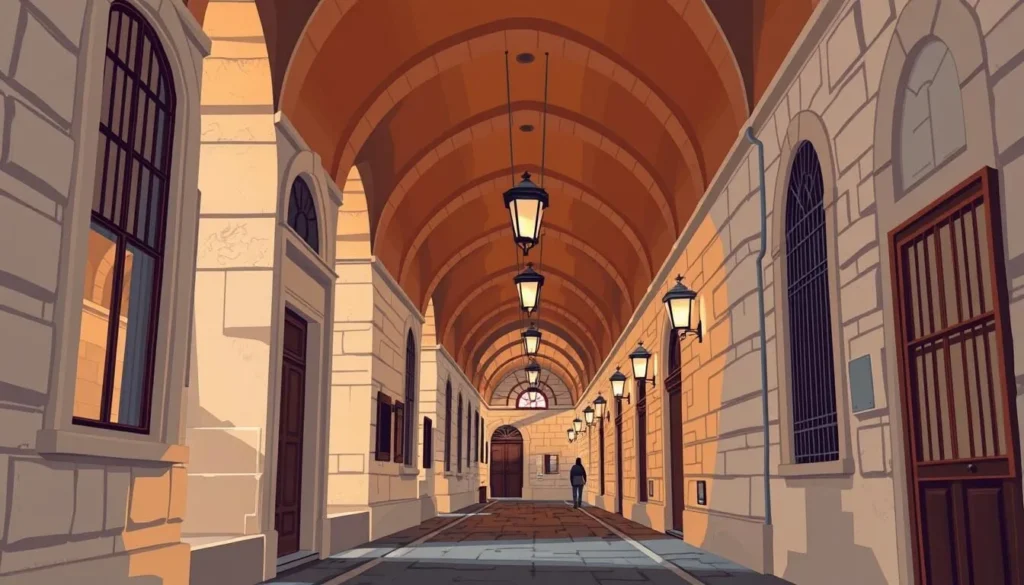
Exploring Lyon’s traboules is like stepping into a hidden chapter of the city’s history. These unique passageways, numbering around 400, crisscross the city, particularly in the Vieux Lyon and Croix-Rousse districts. As you navigate through these hidden walkways, you’ll uncover the rich history and architectural beauty of Lyon.
History of the Hidden Passageways
The traboules have a fascinating history dating back to the 4th century AD. Originally built to connect parallel streets, they allowed silk workers to transport their fabrics protected from the rain. Over time, these passageways became an integral part of Lyon’s infrastructure and played a significant role during World War II as secret routes for the French Resistance.
During your journey through Lyon, you’ll find that these traboules not only reflect the city’s history but also its architectural ingenuity. As you explore, remember that you’re walking through parts of residential buildings, so it’s essential to maintain a respectful volume.
Most Beautiful Traboules to Discover
Some traboules stand out for their beauty and historical significance. The “Long Traboule” connecting Rue Saint-Jean with Rue du Boeuf is particularly famous, featuring a stunning pink tower known as the Tour Rose and a beautiful Renaissance courtyard. As you explore these passageways, you’ll discover the unique charm of Lyon’s historic architecture.
Tips for Finding Hidden Entrances
Finding traboule entrances can be a fun challenge. Look for small doors with brass plaques or follow locals who know which unmarked doors lead to these hidden passages. Keep an eye out for yellow and green markings with arrows, which indicate the way through the traboules. With a little detective work, you’ll uncover many of Lyon’s secret traboules.
As you explore Lyon’s traboules, you’ll gain a deeper understanding of the city’s history and architecture. At the same time, you’ll experience the unique charm of navigating through these hidden passageways, a truly off-the-beaten-path adventure in this historic city.
Visit Fourvière Hill and Basilica
Fourvière Hill, with its iconic Notre-Dame de Fourvière Basilica, offers a unique blend of history, architecture, and panoramic views. As you explore this historic site, you’ll discover the rich heritage and breathtaking beauty that make Lyon a must-visit destination.
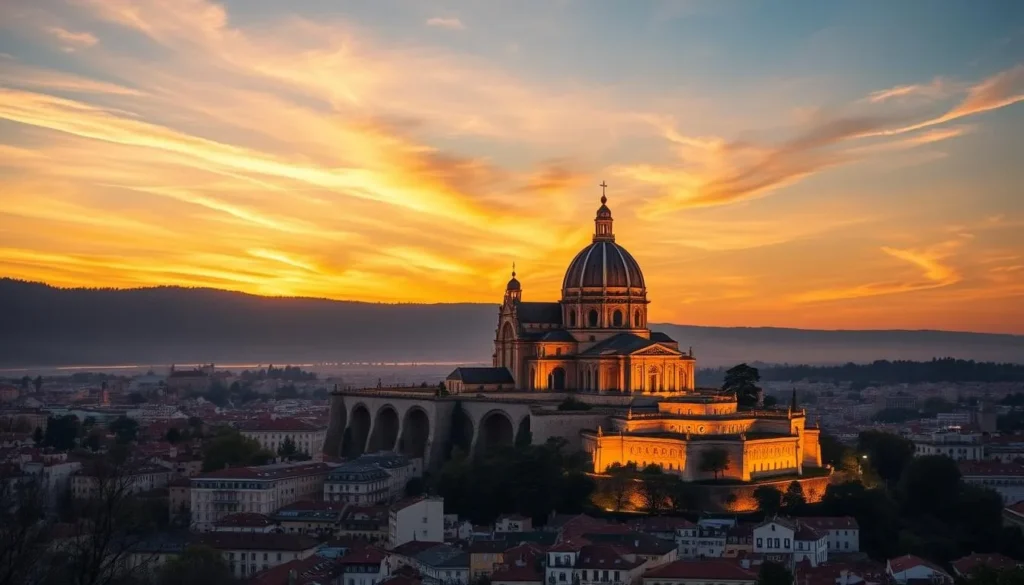
Notre-Dame de Fourvière Basilica
The Notre-Dame de Fourvière Basilica, often referred to as “the upside-down elephant” by locals, is a striking landmark that dominates Lyon’s skyline. Its ornate 19th-century architecture features octagonal towers and a neo-Romanesque facade adorned with statues, columns, and intricate reliefs. Upon entering the basilica, you’ll be struck by the dazzling interior, which boasts repeating geometric patterns on the stone floor and radiant Byzantine-style mosaics along the walls.
The mosaics depict a range of scenes, from the Council of Ephesus to the young Joan of Arc hearing the voices of the saints, adding a layer of historical and spiritual significance to the site. With free entry, visitors can explore this magnificent structure without any cost.
Panoramic Views of Lyon
Next to the basilica, a lookout point offers panoramic views of Vieux Lyon, the Saône River, and the cityscape beyond. From this vantage point, you can take in the red rooftops of the old town and see the city stretching out to the horizon. It’s a perfect spot to appreciate the layout of Lyon and capture memorable photos.
The view from Fourvière Hill is particularly stunning during sunset, when the city is bathed in a warm, golden light. Whether you’re a photography enthusiast or simply looking to enjoy the scenery, the views from Fourvière Hill are not to be missed.
The Metallic Tower of Fourvière
Standing at 85 meters tall, the Metallic Tower of Fourvière is an interesting slice of French history. Built between 1892 and 1894, just a few years after the Eiffel Tower in Paris, this tower adds to the distinctive skyline of Fourvière Hill. Although it doesn’t match the Eiffel Tower in size, it still commands attention and offers a unique perspective on the city’s history.
Today, the tower serves as a television and radio transmitter, continuing its role as a significant landmark in Lyon. Visitors can appreciate its historical significance and the role it plays in the city’s landscape.
Discover Lyon’s Roman Ruins
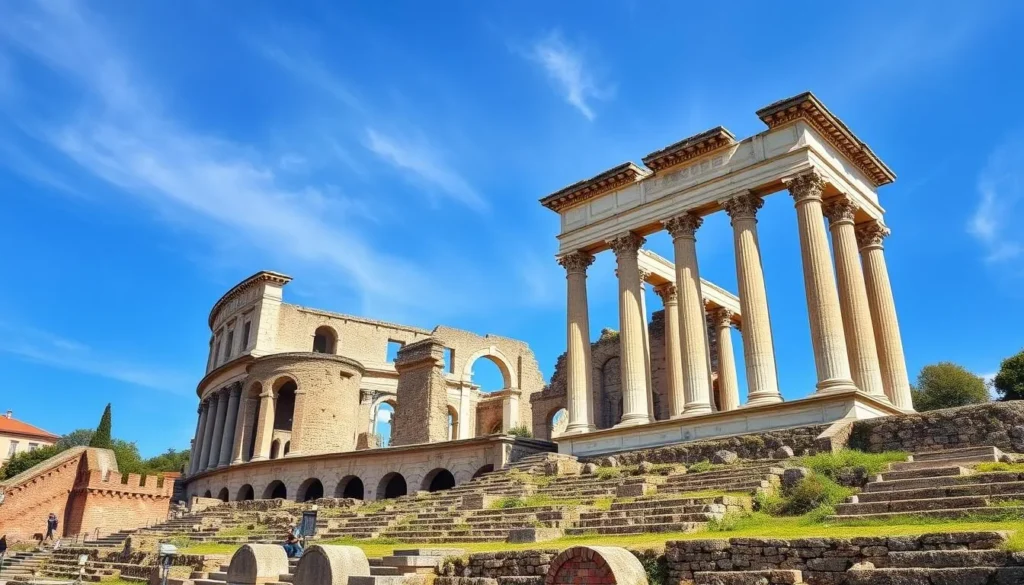
Discover the ancient history of Lyon through its Roman ruins. Lyon, originally known as Lugdunum, was founded in 43 BCE under the Roman Empire. During its early years, Lugdunum saw rapid growth and prosperity, with the construction of forums, theaters, and aqueducts at an impressive rate. Many of these structures are still intact today, offering a glimpse into the city’s rich history.
Théâtre Gallo Romain de Lyon-Fourvière
The Théâtre Gallo Romain de Lyon-Fourvière is one of the oldest Roman theaters in France, built around 15 BC and once capable of seating up to 10,000 spectators for dramatic performances. Today, the ancient theater comes alive each summer during the Nuits de Fourvière festival, when contemporary performances take place in this 2,000-year-old venue. Adjacent to the main theater lies the smaller Odeon, which was used for musical performances and political meetings during Roman times.
Lugdunum Museum
The Lugdunum Museum houses one of France’s most important collections of Roman artifacts, including mosaics, sculptures, and everyday items that provide insight into life in ancient Lugdunum. The museum‘s modern architecture contrasts with the ancient ruins while providing context through interactive exhibits that explain Lyon’s significance as the capital of Roman Gaul. Located in the heart of the city, the museum is a must-visit for anyone interested in exploring Lyon’s Roman heritage in the surrounding area.
These well-preserved ruins offer a tangible connection to Lyon’s ancient past and demonstrate why the city was one of the most important in the Roman Empire outside of Rome itself. Visiting these sites is a great way to experience the rich history of Lyon.
Experience Lyon’s Culinary Excellence
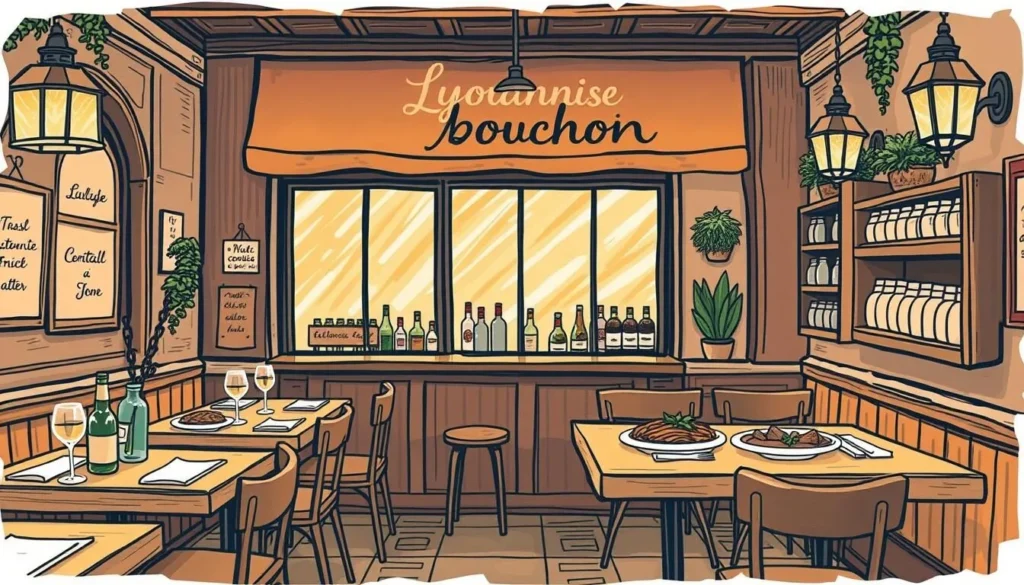
When it comes to fine dining, Lyon stands out as a city that promises an unforgettable culinary journey. With its rich history and cultural influences, Lyon has become a gastronomic capital, offering a diverse range of delicious dishes to savor.
Traditional Bouchons: Lyon’s Authentic Eateries
Traditional bouchons are a staple of Lyon’s culinary scene, offering a unique dining experience that’s deeply rooted in the city’s history. These cozy, family-run restaurants serve hearty, traditional fare that originated as affordable meals for silk workers. To ensure an authentic experience, look for the “Authentique Bouchon Lyonnais” certification, which is awarded to only about 20 restaurants in Lyon.
These bouchons are known for their warm atmosphere and traditional recipes, making them a must-visit for anyone looking to experience the real flavors of Lyon. You can enjoy classic dishes like saucisson brioche (a sausage in pastry) and salade lyonnaise (with bacon, croutons, and a poached egg) in a welcoming setting.
Paul Bocuse’s Legacy in Lyon
Paul Bocuse, Lyon’s most famous chef, revolutionized French cuisine and put Lyon on the global culinary map. His restaurant earned three Michelin stars for over 50 years, cementing Lyon’s reputation as a hub for fine dining. Bocuse’s legacy continues to influence the city’s culinary scene, with many young chefs training in his footsteps.
As you explore Lyon’s culinary delights, you’ll discover the impact of Paul Bocuse’s innovative approach to French cuisine. His emphasis on using fresh, local ingredients has inspired a new generation of chefs to create innovative dishes that showcase the best of Lyon’s food scene.
Must-Try Local Specialties
Lyon is renowned for its local specialties, which blend influences from surrounding regions. Be sure to try quenelle de brochet (pike dumplings in crayfish sauce), cervelle de canut (a fresh herb cheese spread), and other regional delicacies. The city’s position between Beaujolais and Côtes du Rhône wine regions means you’ll find excellent local wines to pair with your meal, enhancing the overall culinary experience.
As you indulge in Lyon’s culinary delights, you’ll understand why the city is considered a food capital. From traditional bouchons to modern eateries, Lyon offers a diverse range of options to suit every taste and preference.
Explore Les Halles de Lyon – Paul Bocuse
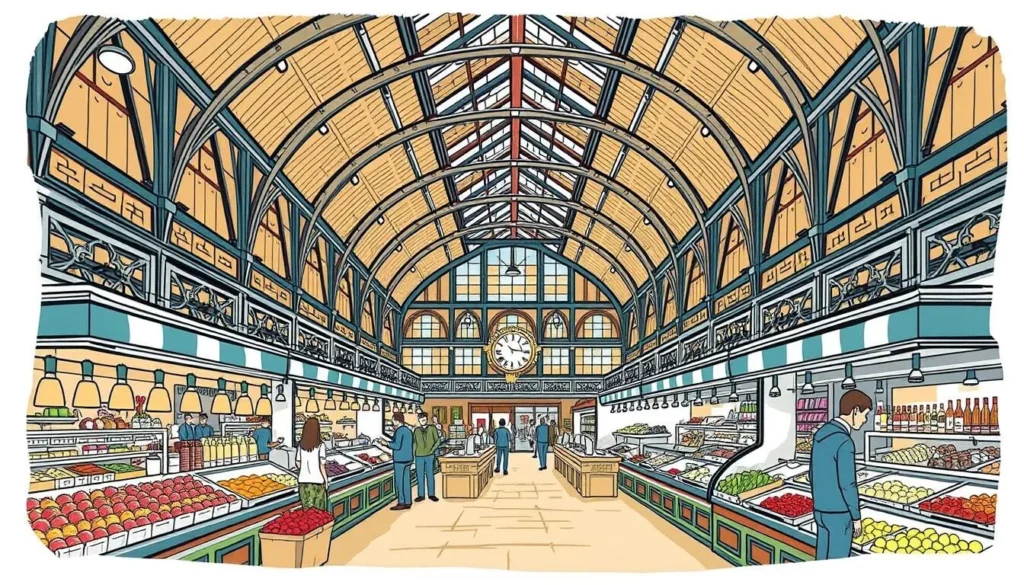
Step into Les Halles de Lyon – Paul Bocuse, where Lyon’s culinary excellence comes alive. This vibrant market hall, named after one of France’s most renowned chefs, is a great place to explore local delicacies and discover some of the city’s best-kept secrets.
Since 1859, Les Halles de Lyon – Paul Bocuse has been serving some of the most tantalizing food in town. The market is open Tuesday to Saturday from 7:00 am to 7:00 pm and Sunday from 7:00 am to 1:00 pm, making it a perfect destination for early risers and food enthusiasts alike.
Navigating the Food Market
To experience the market at its best, visit in the morning when the atmosphere is bustling with both professional chefs and locals shopping for the day’s ingredients. You’ll find approximately 60 vendors offering a wide range of products, from fresh seafood and charcuterie to artisanal cheeses, chocolates, and wines.
The market is not just a place to eat but an educational experience where passionate vendors are happy to explain their products and the culinary traditions behind them.
Best Stalls and Delicacies to Try
Some must-visit stalls include Sibilia for award-winning charcuterie, Mère Richard for Saint-Marcellin cheese, and Chocolatier Sève for exquisite pralines – the pink candied almonds that are a Lyon specialty. You can also enjoy a meal at one of the several small restaurants within the market, such as Chez les Gones, which serves traditional Lyonnaise cuisine.
Les Halles de Lyon – Paul Bocuse is a testament to Lyon’s status as France’s gastronomic capital, offering a culinary journey through the region’s finest products under one roof.
Wander Through La Croix-Rousse District
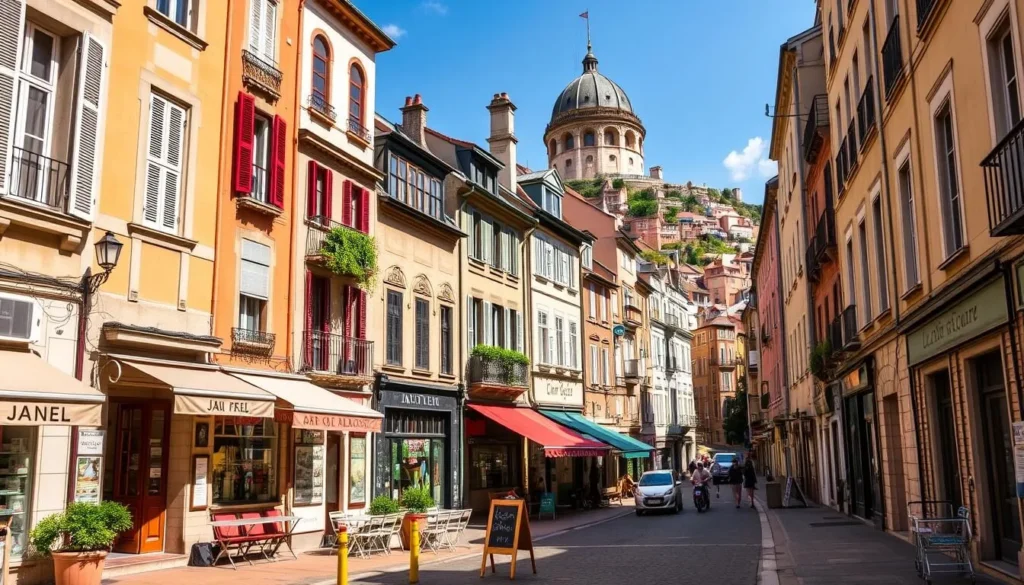
You’ll find a unique blend of history and culture in La Croix-Rousse, Lyon’s historic district. This charming neighborhood is known for its artisan shops, historic buildings, and vibrant culture.
The Silk Workers’ Neighborhood
La Croix-Rousse sits atop a hill nicknamed “the hill that works,” reflecting its industrial heritage as the center of Lyon’s silk production. The neighborhood was built specifically for silk workers (canuts) with buildings featuring high ceilings to accommodate the tall Jacquard looms used in silk production.
Mur des Canuts and Street Art
The Mur des Canuts (Silk Workers’ Wall) is Europe’s largest trompe-l’œil mural, creating an optical illusion of depth and reality that depicts daily life in the neighborhood. This vast fresco is a tribute to the normal, everyday life of the La Croix-Rousse neighborhood, the former silk industry hub of the city.
Local Shops and Cafés
Today, the district has transformed into a bohemian area filled with artisan workshops, independent shops, and cozy cafés while maintaining its working-class spirit. You can visit the weekly market on Boulevard de la Croix-Rousse, one of Lyon’s best, offering local produce, crafts, and a genuine slice of local life away from tourist crowds.
As you wander through La Croix-Rousse, you’ll experience the essence of Lyon’s silk workers heritage and discover why it’s considered one of the city’s most Lyon famous neighborhoods.
Relax at Parc de la Tête d’Or
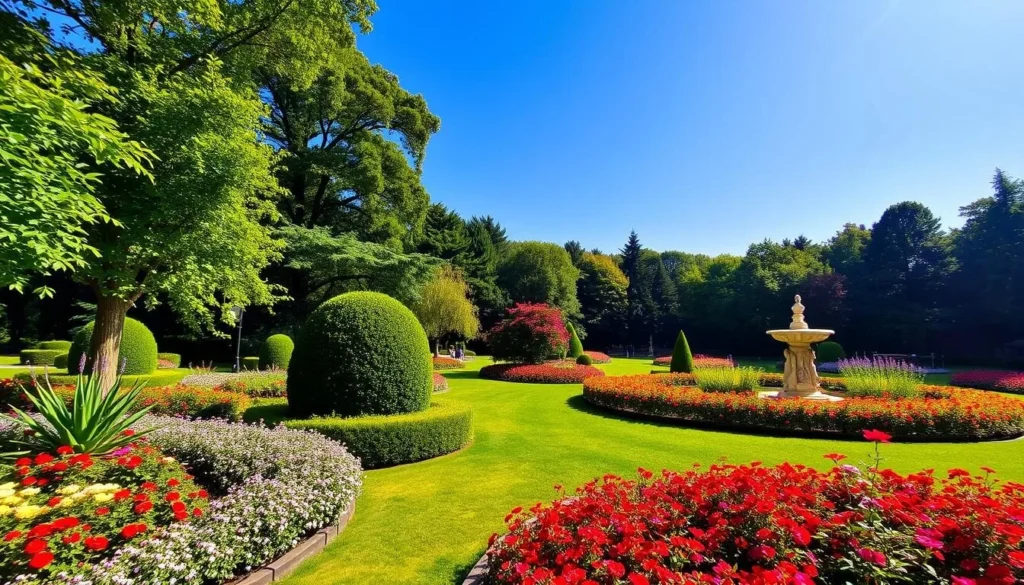
If you’re looking for a serene escape from Lyon’s bustling streets, Parc de la Tête d’Or is a must-visit destination. This urban oasis offers a variety of activities and stunning landscapes, making it a great place to unwind.
Parc de la Tête d’Or, or Golden Head Park, is France’s largest urban park, spanning 290 acres in the heart of Lyon. With a history dating back to the 1530s, it opened as a public park in 1857 and has since become a popular spot for locals and tourists alike.
The Botanical Gardens and Zoo
The park is home to an impressive botanical garden featuring 16,000 plant species, including France’s largest collection of rare plants. The gardens are a haven for nature lovers and photographers, with spectacular greenhouses offering tropical environments. Additionally, the park houses a free zoo with approximately 300 animals, focusing on the conservation of endangered species.
Boating on the Lake
During the summer, the central lake becomes a hub of activity. You can rent rowboats and pedal boats for a leisurely afternoon on the water, enjoying the scenic views of the surrounding area.
Seasonal Activities and Events
Throughout the year, Parc de la Tête d’Or hosts various seasonal events, including concerts, exhibitions, and the spectacular annual Festival of Lights installations in December. These events make the park a vibrant and dynamic destination, regardless of the time of year you visit.
Whether you’re looking to explore the botanical gardens, enjoy a boat ride, or simply relax in a beautiful setting, Parc de la Tête d’Or is an ideal destination in the city.
Visit Lyon’s World-Class Museums

As you explore Lyon, you’ll discover a wealth of world-class museums that are sure to captivate and inspire. The city is home to a diverse range of museums, each offering a unique perspective on art, history, and culture.
Musée des Confluences
The Musée des Confluences is housed in a striking deconstructivist building at the confluence of Lyon’s two rivers, its futuristic architecture symbolizing the meeting of ideas and cultures. Inside, the museum tackles big questions about humanity’s origins and purpose through an impressive collection spanning natural history, anthropology, and science. You’ll find relics such as meteorite fragments, Peruvian mummies, and massive skeletons, including a 155-million-year-old Camarasaurus.
Musée des Beaux-Arts
Located in the heart of the city, the Musée des Beaux Arts is one of the largest museums in France and a must-visit for art enthusiasts. The museum is housed in a former 17th-century abbey and is considered France’s second most important art museum after the Louvre. Its diverse collection includes works by Picasso, Monet, and Rubens, as well as an exceptional Egyptian antiquities section.
Cinema and Miniature Museum
The Cinema and Miniature Museum celebrates Lyon’s role as the birthplace of cinema through an impressive collection of movie props, special effects items, and miniature film sets. With over 450 original Hollywood movie props, including items from major films like Alien, Batman, and Jurassic Park, this museum is a must-visit for film enthusiasts.
Lyon’s museums offer a unique and enriching experience, making the city a great destination for those who appreciate art, history, and culture. Whether you’re visiting the Musée des Confluences, Musée des Beaux-Arts, or the Cinema and Miniature Museum, you’re sure to be captivated by the city’s rich cultural heritage.
Stroll Along Lyon’s Rivers
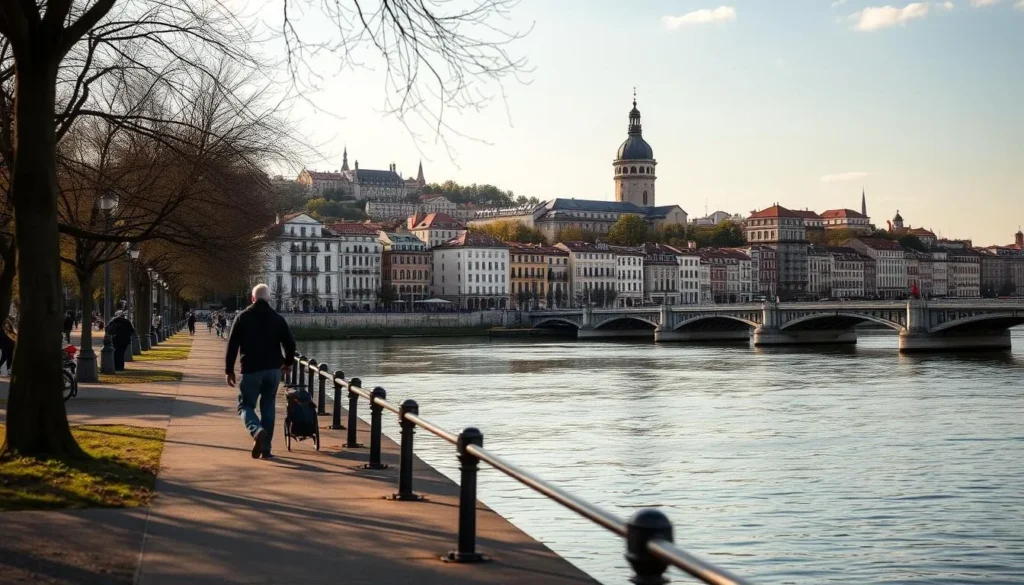
Lyon’s scenic riversides are a must-visit, offering a blend of history and modernity. The city’s two main rivers, the Saône and Rhône, have shaped Lyon’s geography and history, creating a unique urban landscape.
Saône River Promenades
The Saône River offers picturesque views with its slower pace, historic bridges, and excellent vantage points of Vieux Lyon’s colorful Renaissance buildings. As you stroll along its banks, you’ll discover charming riverside cafés and small fishing boats, making it a perfect spot for a romantic evening walk.
Rhône River Banks and Activities
In contrast, the Rhône’s banks have been redeveloped into a modern recreational area, featuring floating bars, bike paths, and landscaped gardens that come alive in summer. During summer evenings, both riverbanks transform into vibrant gathering spots for locals, with picnics, impromptu music performances, and pétanque games showcasing authentic Lyon lifestyle.
Whether you’re enjoying a leisurely stroll or opting for a river cruise, Lyon’s rivers offer a unique perspective on this beautiful city. River cruises, especially dinner cruises, provide spectacular views of illuminated landmarks and a chance to savor Lyon’s famous cuisine.
Shop at Lyon’s Markets and Boutiques
From flea markets to luxury shopping districts, Lyon provides a unique shopping experience that blends tradition with modernity. As you explore the city, you’ll discover a variety of markets and boutiques that showcase Lyon’s rich cultural heritage and commitment to quality craftsmanship.
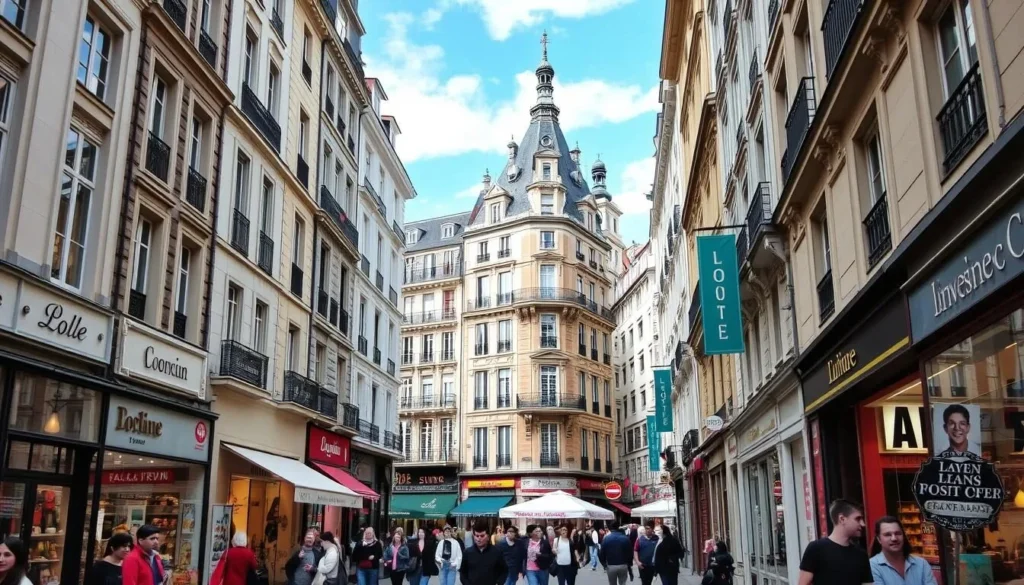
Les Puces du Canal Flea Market
Les Puces du Canal is Lyon’s largest flea market, where over 400 vendors sell everything from antique furniture and vintage clothing to rare collectibles and artisanal crafts. The market creates a treasure-hunting experience as you navigate through different sections, each with its own specialty – from mid-century modern furniture to French country antiques.
You can find unique items such as North African jewelry, Iranian ceramics, and Syrian copper candleholders. The market also features casual restaurants where you can refuel with dishes like roasted porchetta or fish and chips.
Place Bellecour and Shopping Districts
Place Bellecour is Europe’s largest pedestrian square and serves as the commercial heart of Lyon, with major retailers, luxury boutiques, and department stores lining its perimeter. The square is also known for its massive bronze statue of King Louis XIV and hosts various events throughout the year, including pétanque competitions.
The shopping districts around Rue de la République and Rue Victor Hugo offer a mix of international brands and local boutiques in elegant 19th-century buildings, providing a sophisticated shopping experience.
Artisanal and Specialty Shops
Lyon’s silk heritage lives on in specialty shops like Soierie Saint-Georges, where you can purchase authentic Lyon silk scarves and learn about traditional silk-screening techniques. The city’s artisanal shops reflect Lyon’s commitment to quality craftsmanship, with chocolatiers, bookbinders, and custom perfumers continuing centuries-old traditions.
These shops offer a glimpse into Lyon’s artisanal past while providing unique souvenirs and gifts that reflect the city’s elegance and sophistication.
Experience Lyon’s Nightlife
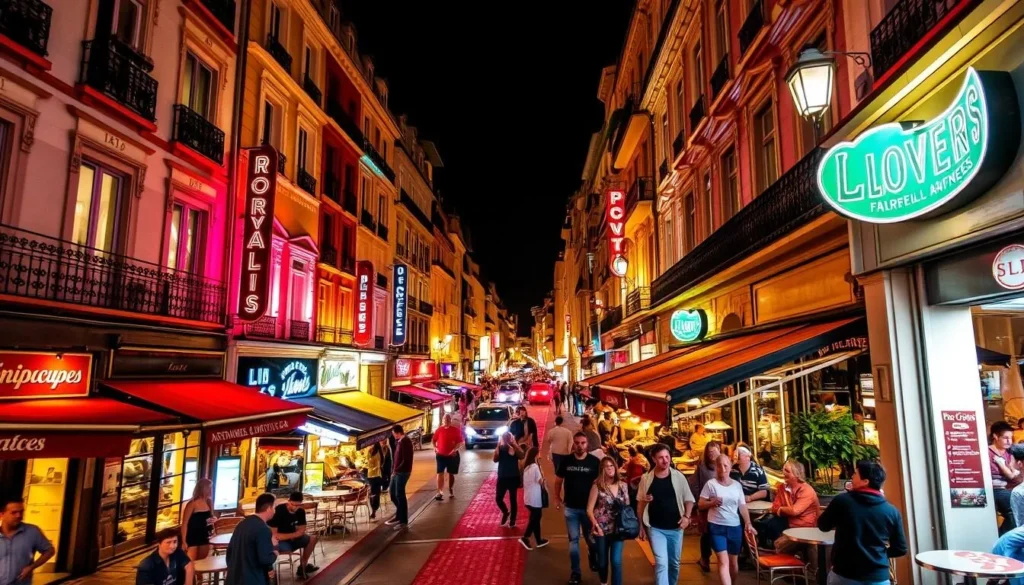
Lyon’s nightlife is a hidden gem waiting to be discovered. As you explore the city’s evening entertainment options, you’ll find that it’s a more relaxed alternative to Paris, with an emphasis on quality wine, conversation, and enjoying life at a leisurely pace rather than clubbing until dawn.
Wine Bars and Local Hangouts
The Presqu’île district becomes particularly vibrant after dark, with wine bars clustered around Rue Mercière and Place des Terreaux offering extensive selections from nearby Beaujolais and Rhône Valley vineyards. For an authentic experience, visit a “caviste” (wine shop) that transforms into a bar in the evening, where locals gather to sample wine by the glass alongside charcuterie plates.
Some popular local hangouts include Le Terrier du Lapin Blanc, Dam’s Pub, and Bar du Passage, each offering a unique atmosphere. At Le Terrier du Lapin Blanc, you’ll find a cozy place to enjoy a drink, while Dam’s Pub is perfect for a casual beer. Bar du Passage stands out with its jazz music and mural-covered ceilings, making it a great spot to spend your time.
Evening River Cruises
Evening river cruises combine sightseeing with Lyon’s culinary excellence, as the city’s landmarks are illuminated against the night sky while you enjoy a gourmet dinner onboard. It’s a unique way to see Lyon’s beauty and experience the city’s life after dark.
During summer, temporary “guinguettes” (open-air bars) pop up along the riverbanks, creating a festive atmosphere where you can enjoy a glass of wine with your feet practically in the water. This is a great way to make the most of your time in Lyon and enjoy the city’s relaxed vibe.
Attend Lyon’s Famous Festivals
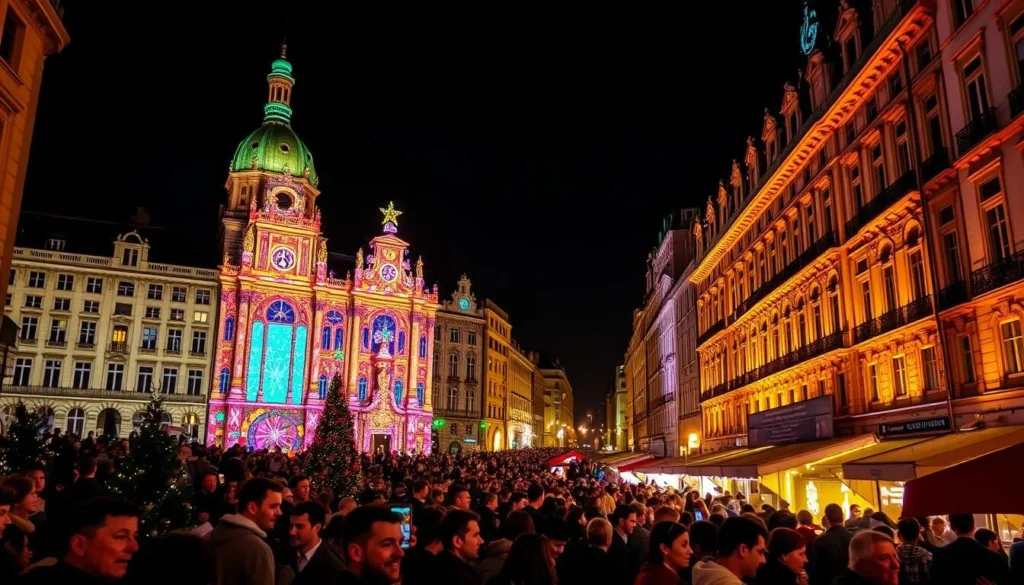
The city of Lyon hosts a variety of festivals that showcase its rich culture and history. These events are a significant part of Lyon’s identity, attracting visitors from all over the world.
Fête des Lumières (Light Festival)
The Fête des Lumières, or Festival of Lights, is one of Lyon’s most iconic events. It takes place every year on December 8th, where locals pay tribute to the Virgin Mary for sparing them from the Bubonic plague in 1643. The entire city comes alive with a magical display of lights and colors. Residents place candles along their windows, and there are performances and light shows at notable locations like Place des Terreaux and Fourvière Basilica.
The festival has its roots in a 17th-century tradition and has evolved into a grand celebration that attracts over 2 million visitors, making it one of Europe’s largest public festivals.
Les Nuits de Fourvière
Every summer since 1946, Lyon has hosted Les Nuits de Fourvière, a festival dedicated to the arts, including theater, music, and dance. The event takes place in the Théâtre Antique de Fourvière, providing a unique backdrop for the performances. With around 60 performances each summer, there’s something for everyone, ranging from classical to contemporary genres.
Nuits Sonores and Other Events
Lyon’s festival calendar is diverse, with events like Nuits Sonores, an electronic music festival that takes over unusual venues across the city. Other notable events include the Lumière Film Festival, celebrating cinema in the city where it was invented, and the biennial Contemporary Art Festival, which transforms public spaces into open-air galleries.
Whether you’re interested in music, dance, theater, or visual arts, Lyon’s festivals offer a list of exciting experiences that make your visit to the city truly memorable. Be sure to check the festival schedules and plan your visit accordingly to make the most of your time in Lyon.
Take Day Trips from Lyon
You can take exciting day trips from Lyon to discover the charms of the surrounding areas. Lyon’s location makes it an ideal base for exploring the beautiful regions of France.
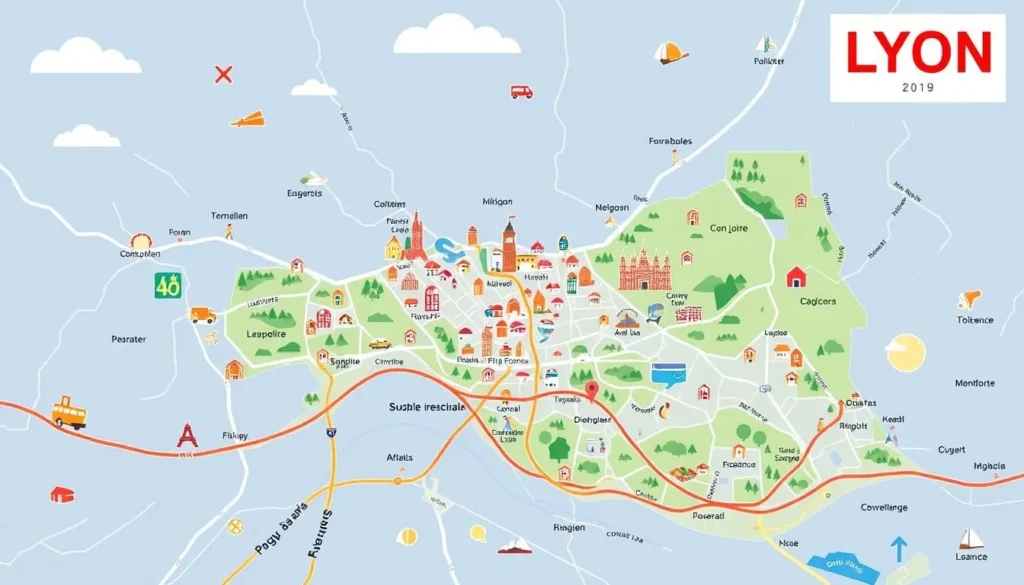
Beaujolais Wine Region
The Beaujolais wine region, located just north of Lyon, is a must-visit destination for wine enthusiasts. The region is known for its rolling vineyard-covered hills, charming stone villages, and family-run wineries where you can taste the famous light, fruity red wines.
Visit during November to experience the excitement of Beaujolais Nouveau Day when the year’s new wine is released amid festivities throughout the region.
Medieval Village of Pérouges
The medieval walled village of Pérouges is often listed among France’s most beautiful villages. Its cobblestone streets and well-preserved 15th and 16th-century buildings are frozen in time, offering a glimpse into the past.
Don’t leave Pérouges without trying its signature dessert, the galette de Pérouges – a warm, sugar-coated flatbread that has been made the same way for centuries.
Other worthwhile day trips include the Roman city of Vienne with its exceptional ancient theater, the medieval town of Annecy with its crystal-clear lake, and the Dombes region with its thousand ponds and abundant wildlife. When you see Lyon and its surroundings, you’ll discover a wealth of exciting experiences.
Lyon, France: Best Things to Do – Practical Tips
Lyon, a city steeped in history and gastronomy, requires some insider knowledge to explore effectively. As you prepare for your visit, understanding the best times to visit, how to navigate the city, and where to stay will significantly enhance your experience.
Best Time to Visit Lyon
The best time to visit Lyon is during spring (April-June) and fall (September-November) when the weather is pleasant, and you can avoid both summer crowds and winter’s Fête des Lumières influx. These periods offer ideal conditions for exploring the city’s historic areas and enjoying the local cuisine at various restaurants.
Getting Around the City
Lyon’s public transportation system is excellent, with a comprehensive network of metros, trams, funiculars, and buses that make navigating the city straightforward and affordable. You can use a map to familiarize yourself with the different areas and transportation options. The Lyon City Card offers excellent value for visitors, including unlimited public transport and free entry to major museums and attractions, plus discounts at many restaurants.
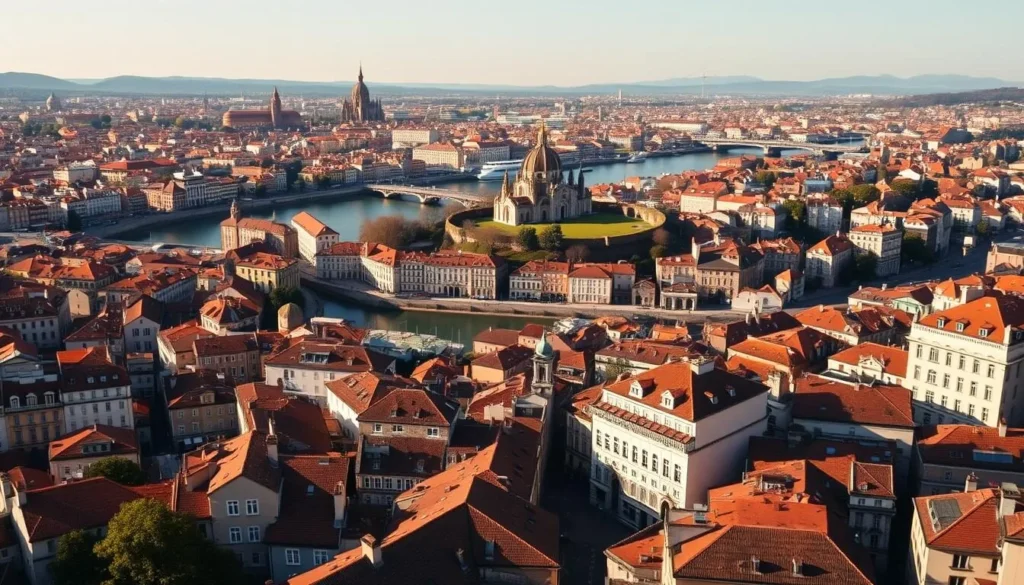
Where to Stay in Lyon
For accommodation, consider staying in La Presqu’île, the most central neighborhood, which includes the area around the city hall all the way down to the Perrache train station. This place offers easy access to major attractions like the Place Bellecour, the largest pedestrian square in Europe, and the Museum of Fine Arts. You can also use a map to explore different neighborhoods and find the best location for your list of priorities.
Whether you choose La Presqu’île for its central convenience, Vieux Lyon for its historic charm, or Part-Dieu for its modern amenities and transportation connections, Lyon has something to offer every traveler. Make sure to plan ahead, especially when it comes to making reservations at popular restaurants and authentic bouchons, which are often fully booked, particularly on weekends and during major events.
Conclusion
After exploring Lyon, you’ll discover that this French city is a treasure trove of experiences waiting to be uncovered. Lyon offers a perfect blend of France’s greatest attractions: world-class gastronomy, well-preserved history spanning two millennia, stunning architecture, and a vibrant cultural scene.
Unlike Paris, Lyon provides an authentic French experience where you can enjoy magnificent views, exceptional food, and rich history without the overwhelming crowds. The city’s manageable size allows visitors to experience its diverse areas in a single trip, from Roman ruins and Renaissance streets to contemporary art and modern architecture.
Whether you’re a food enthusiast, history buff, art lover, or outdoor adventurer, Lyon deserves a prominent place on your travel bucket list for its ability to satisfy all interests. As you plan your visit to Lyon, remember that the city’s greatest charm lies in the balance it strikes between preserving its past and embracing innovation – a quality evident in its cuisine, architecture, and way of life.
In conclusion, Lyon is a great place to visit, with its rich history, stunning views, and vibrant cultural scene. With its strategic location, Lyon makes an ideal base for exploring central France, with easy day trips to wine regions, medieval villages, and natural landscapes. See Lyon for yourself and experience the city’s unique charm.
The above is subject to change.
Check back often to TRAVEL.COM for the latest travel tips and deals.
